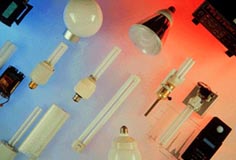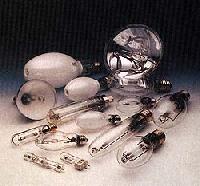|
:: navigate ::
:: news
:: gallery
:: gardens
:: forum
:: cultivation
:: visitors page
:: join us
:: about us
:: members
:: chat
:: help
:: bongs
:: links
:: contact us

|
|
|
This is the Growers Guide they currently have at marijuana.com and it was also the best one I could find so have fun and good luck if you try to grow. If there are any mistakes or anything you guys would like to put into this guide please email us at [email protected].
1. Introduction
2. Chosing and Obtaining Your Desired Strain
3. Lighting
4. Germination
5. Vegetative Growth & Flowering
6. Harvest (drying and curing)
7. Outdoor Cultivation
8. Hydroponics
9. Organics
Lighting
Light is needed by a plant for using nutrients and manufacturing food. It has a great influence on
chlorophyll production, growth rate, leaf size, and flower and seed production.
Light will be one of the most important aspects of your grow operation. For the purposes of
growing marijuana there are two basic types of lights; Fluorescent's (HID High Intensity Discharge - including MV (mercury vapor), MH (metal halide), and HPS (High Pressure Sodium)
HID vs. FLUORESCENT'S
The main difference is that fluorescent's create light by passing electricity through a gas vapor under low pressure and HID creates light by passing electricity through a gas vapor under high pressure. HID
lights are MUCH brighter and while initially more expensive, are more cost efficient to
operate and will grow a much nicer crop. Therefore, they are the light of choice for most indoor
growers.
FLUORESCENTS

Fluorescents come in a wide variety of shapes and sizes. There are compacts, twist bulbs and circle bulbs. They all work the same way. They have a starter and ballast which help provide a steady and regulated amount of electricity to the light.
Before HID lights were available indoor growers used fluorescent lights. While fluorescents
can be used for an entire grow from seedling to harvest, it is generally not advised to use them in this way.
To grow effectively with fluorescent's, think small. These lights are better suited for starting
seedlings, rooting clones and small plants, maintaining moms for cloning purposes, and
providing sidelight for the undergrowth. These situations do not require a high intensity of light
to run their course. The light emitted by fluorescents is gentler and more diffuse, it doesn't release
a lot of heat, and doesn't make the plant work as hard. For this reason they can be kept closer to the plant. One or two inches is sufficient, but this also means that the lights must be adjusted almost daily to accommodate growth which can be troublesome.
High Intensity Discharge

There are basically 3 types of HID lights. MV (Mercury vapor), MH (Metal Halide), and HPS (High Pressure Sodium). These lights also require a starter and a ballast.
MV - Mercury Vapor is the type of lights that were used for streetlights many years ago. Not very good for growing because it doesn't provide enough of the right kind of light spectrum. While they do provide a littleof the blue spectrum, MV also produces too much heat to get very close to a plant, and are very inefficient to operate.
MH - The Metal Halide is a very good source of the white/blue spectrum of light that is ideal for vegetative growth. Many growers use MH during the vegetative phase. MH is bright and cost efficient to operate, but not as efficient as HPS lights. Most commonly used sizes are 400 watt and 1000 watt. Works best when
used in combination with HPS lights.
HPS - The best light available today for growing Marijuana. High Pressure Sodium lights are very bright and very efficient. This
light has a red/orange spectrum that is ideal for the flowering phase. With enough of these kind
of lights you too can grow those centerfold buds. HPS comes in a wide variety of wattages
from 70 watts up to 1000 watts.
LIGHTING FORMULAS
To correctly determine the best lighting for your space there are several things that you have
to know. At this point, a couple of definitions are in order.
Lumens - one lumen is equal to the amount of light emitted by one candle that falls on one square foot of surface one foot away.
Watts - A measure of the amount of electricity flowing through a wire. Watt hours measure the
amount of watts used in one hour. A kilowatt/hour (KWH) is 1000 watt/hours.
To determine the cost of operating your light:
Find your KWH charge on your electric bill. Assume you have a 1000 watt light and your KWH
charge is $.05/hour. A kilowatt equals 1000 watts, therefore it will cost you .05 cents per hour to run
that light. Here's another example. Say you have a 400 watt light and your KWH charge is $.03. Since 400 watts
is not a kilowatt, you must divide 400 by 1000 = .4 kilowatts x .03 (KWH rate from electric bill)
= $0.012 cents per hour to run.
To determine how many lumens per square foot you have:
Find out the square footage of your space. Width x Depth = Square feet. Divide the lumens available by your square footage.
This will give you lumens per square foot.
Example: Say your space is 3 feet deep by 4 feet wide, 12 square feet. The total lumens available
from your light(s) is 45000 lumens. 45000/12 = 3750 lumens per square foot.
Now for the big question. How much light do I need? Technology has advanced so much in
the last 15 years that we are constantly refining the process and updating what we know works
best for growing. Current theory holds that the minimum amount of lighting needed to sustain
growth is around 2000 lumens per square foot. Mid range is around 5000 lumens per square
foot. Optimal is 7000-7500, or higher, lumens per square foot.
What if you want to determine how much light you need in watts?
The general rule of thumb for providing light for an area is a minimum of 30 watts per square
foot. 50 watts per square foot is optimal. You can determine the proper lighting for your area
by using this formula: 30 watts (or 50) x ?(your) square feet. Example: You have an area of 10 sq.
ft. - 30w x 10 s.f. = 300watts/sq.ft minimum or 50 watts x 10 s.f. = 500 watts/sq. ft. (optimal).
Also, remember that fluorescent's are weaker and emit less light than an HID. This means you
will need 5 times the amount of wattage to equal the output of an HID. So, 30 watts of HID
would equal 150 watts of fluorescent's. This is why it is advised to provide a minimum of 30
watts per square foot for HID lights and a minimum of 150 watts per square foot for
fluorescent's.

This is all important because the light intensity will directly affect the quality and yield of
your crop. If you have less than optimal lighting your yield and potency will be reduced and buds
will not develop as dense. This point can not be stressed enough. You must have the right amount of
light for your space to grow high quality bud. The question is often asked, "can I have too
MUCH light?". The basic answer is no. According to the law of diminishing returns, you
could theoretically reach a point when your plants just couldn't absorb any more light but it
would be impossible to have that many lights in your space. Heat from the lights would
become a problem long before you ever reached that point. So use as many lights as you want,
just control the heat.
Experimentation is the only sure method to determine the best solution for each plant. If plants
are not receiving enough light, they begin to grow tall and spindly as if stretching for the light
and foliage becomes pale green. Or, if they need to be moved closer to the light, or given a longer
light exposure period. Too much light may lead to bleaching of leaves and flowers,
browning and shriveling. Leaves would become overly compact and curl under at the edges.
PHOTOPERIOD
Your plants should be started and taken through vegetative growth with a 24/7 or 18/6 light
regimen. The reason for an 18/6 regimen is to give the plants a short dark period to breathe
and to reduce your electric bill a little bit. Most plants thrive with at least 16 hours of light a
day. Adjustments should be made according to individual plant requirements.
For flowering 12/12 is the norm. Again, adjustments may need to be made. A minimum of 12
hours of darkness is required to trigger the flowering process.
LIGHTING NO-NO'S
Don't burn your plants by getting them to close to the light(s). Fluorescent's do not put out
much heat and can be as close as one or two inches. HID lights get much hotter and will need to be
farther away. A good test is to put your hand between the light and the plant. If your hand gets
too hot for comfort, the light is too close.
There are some common lights that may induce a seed to come up, but are worthless for growing
purposes. These lights include; Any incandescent (regular) light bulb, halogen lights, black
lights and heat lamps. Don't waste your time trying to grow with these lights, you will only be
disappointed.
|
|
